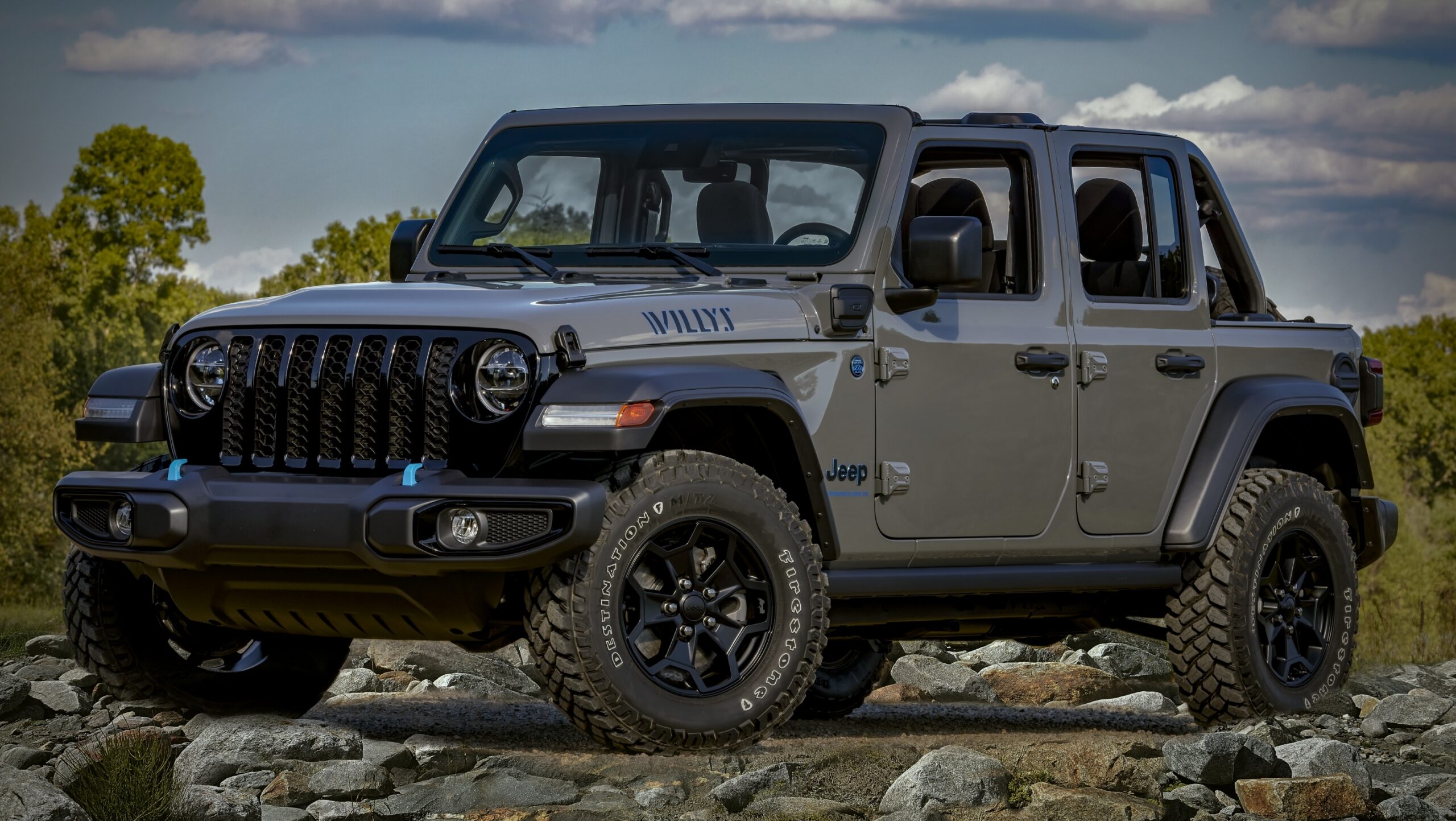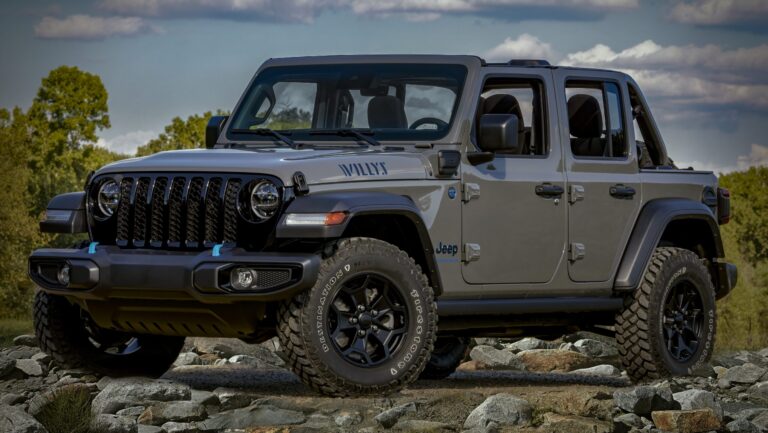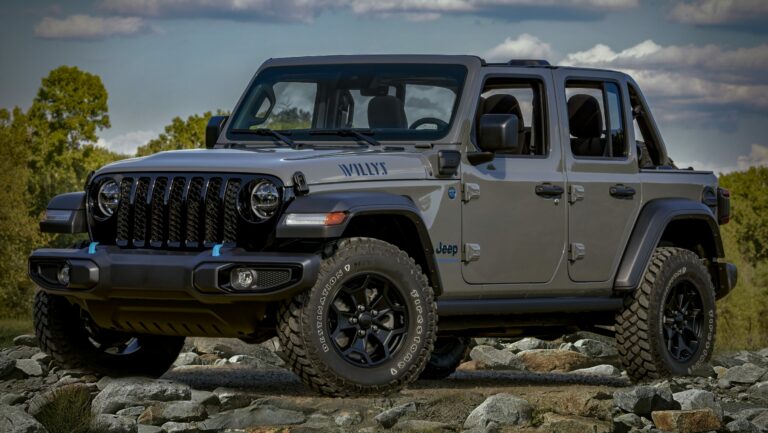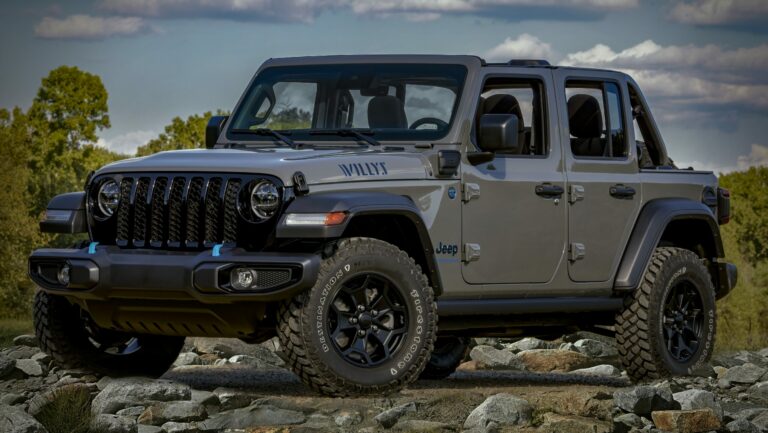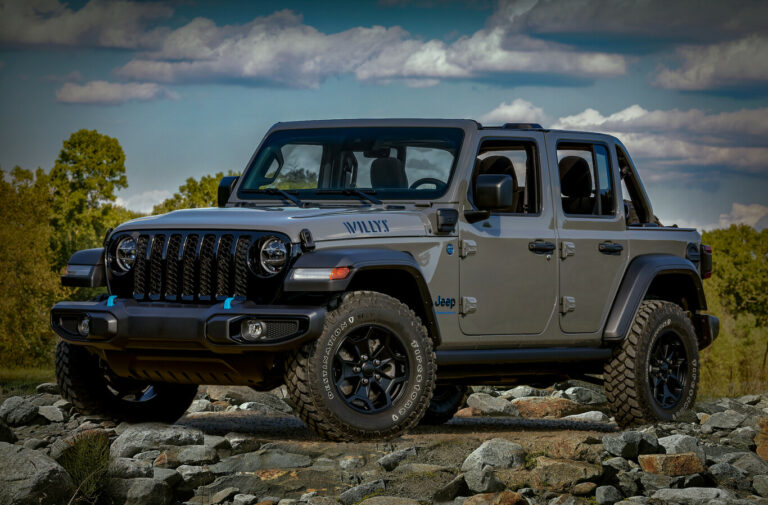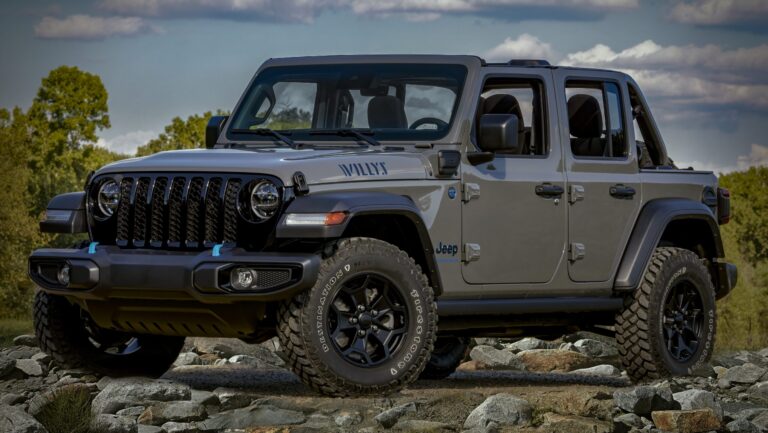Jeep XJ Transmission For Sale: Your Comprehensive Guide to Finding the Perfect Drivetrain
Jeep XJ Transmission For Sale: Your Comprehensive Guide to Finding the Perfect Drivetrain jeeps.truckstrend.com
The Jeep Cherokee XJ, produced from 1984 to 2001, is a legendary vehicle renowned for its rugged durability, off-road prowess, and timeless design. Often hailed as one of the most capable and beloved SUVs ever built, the XJ continues to be a popular choice for enthusiasts, off-roaders, and daily drivers alike. However, like any mechanical component, the heart of its drivetrain—the transmission—can eventually show signs of wear, succumb to the rigors of heavy use, or simply reach the end of its lifespan. When this happens, the quest for a "Jeep XJ Transmission For Sale" becomes paramount, a mission critical to keeping these iconic vehicles on the road, or more importantly, off the beaten path.
This comprehensive guide is designed to navigate the complexities of acquiring a replacement transmission for your beloved XJ. We’ll delve into the different types available, where to find them, crucial considerations before purchase, and practical advice to ensure you make an informed decision that keeps your Cherokee thriving for years to come.
Jeep XJ Transmission For Sale: Your Comprehensive Guide to Finding the Perfect Drivetrain
Understanding the Jeep XJ Transmission Landscape
Before you begin your search, it’s vital to understand the various transmissions that powered the Jeep XJ throughout its production run. Identifying your specific transmission is the first and most critical step, as compatibility is non-negotiable.
The most common transmissions found in the Jeep XJ, particularly those with the venerable 4.0L inline-six engine, include:
- AW4 (Aisin-Warner 4-speed Automatic): This is by far the most prevalent automatic transmission in the 4.0L XJ from 1987-2001. Known for its robust nature, reliability, and smooth shifting, the AW4 is a favorite among XJ owners. Its electronic controls make it efficient and adaptable.
- AX-15 (Aisin-Warner 5-speed Manual): A highly regarded manual transmission used with the 4.0L engine from 1989-1999. The AX-15 is celebrated for its strength and durability, making it a popular choice for those who prefer rowing their own gears, especially for off-road control.
- NV3550 (New Venture Gear 5-speed Manual): Introduced in 2000-2001 as a replacement for the AX-15 in the 4.0L XJ, the NV3550 is another strong and reliable manual transmission. It’s slightly different from the AX-15 in terms of bellhousing bolt pattern and input shaft length, so direct interchangeability without modifications is limited.
- BA-10/5 (Peugeot 5-speed Manual): Found in earlier 4.0L XJs from 1987-1989, this transmission is generally considered weaker than its successors. Many owners choose to upgrade to an AX-15 or NV3550 if their BA-10/5 fails.
- TorqueFlite 904/999 (Chrysler 3-speed Automatic): Used in earlier 2.5L and some 4.0L XJs (pre-1987), these 3-speed automatics are less common but still encountered.
![]()
Knowing your XJ’s year, engine, and current transmission type is paramount. This information will dictate your search and ensure you find a compatible replacement, preventing costly mistakes and frustrating delays.
Why Buy a Replacement XJ Transmission?
The decision to seek a "Jeep XJ Transmission For Sale" typically stems from a few common scenarios:

- Failure: The most obvious reason. Common symptoms include slipping gears, harsh shifts, grinding noises, fluid leaks, delayed engagement, or a complete loss of drive.
- Preventative Maintenance: Some enthusiasts might replace a high-mileage transmission before it fails, especially if planning extensive modifications or rigorous off-road use.
- Upgrade/Swap: Less common but certainly possible, some owners opt to swap their automatic transmission for a manual, or replace a weaker manual (like the BA-10/5) with a stronger one (AX-15/NV3550) for improved performance or personal preference.
- Project Vehicle: Acquiring a transmission for an XJ project that is missing its drivetrain or needs a complete overhaul.

While rebuilding your existing transmission is an option, buying a replacement can often be more cost-effective and time-efficient, especially if you’re not an expert rebuilder or if the damage is extensive. A quality used, rebuilt, or remanufactured unit can provide many more miles of reliable service.
Where to Find Jeep XJ Transmissions For Sale
The market for XJ transmissions is diverse, offering several avenues for acquisition, each with its own pros and cons:
- Salvage Yards/Junkyards: Often the cheapest option. You might find low-mileage units pulled from accident vehicles. The risk is higher as you typically buy "as-is" with no warranty. Inspection before purchase is crucial.
- Online Marketplaces (eBay, Craigslist, Facebook Marketplace): A vast resource for both private sellers and smaller businesses. Prices can be competitive, but vigilance is key. Always verify the seller’s reputation and ask for detailed photos and information.
- Specialty Jeep/4×4 Parts Retailers: Many companies specialize in used, rebuilt, or remanufactured Jeep parts. These sources often provide warranties, ensuring a higher degree of confidence in your purchase. They typically have better quality control than a random junkyard pull.
- Transmission Shops: Local and national transmission repair shops often sell rebuilt units or can source them for you. They usually offer installation services and warranties on both the part and labor.
- Online Forums and Enthusiast Groups: Jeep XJ specific forums and Facebook groups are excellent places to find parts. Members often sell spare transmissions, offer advice, and can vouch for reputable sellers.
- OEM Dealers (Limited): While rare for a vehicle of this age, new OEM transmissions might still be available from Chrysler/Jeep for certain models, but expect a premium price.
Key Considerations When Purchasing Your XJ Transmission
Making an informed decision requires careful consideration of several factors beyond just the price tag:
- Condition:
- Used: Lowest cost, highest risk. Inquire about mileage, fluid history, and any known issues. Ask for videos of the vehicle running before removal, if possible.
- Remanufactured/Rebuilt: Best balance of cost and reliability. These units have been disassembled, inspected, worn parts replaced, and reassembled to factory specifications. They often come with a warranty (e.g., 1-3 years). This is generally the recommended option for reliability without the "new" price tag.
- New: Rarest and most expensive for an XJ. Offers peace of mind but may not be cost-effective.
- Compatibility: Double-check the year, engine type (2.5L, 4.0L), 2WD or 4WD configuration, and specific transmission model (AW4, AX-15, NV3550). Pay attention to input/output shaft splines, bellhousing patterns, and sensor locations. A VIN check can help confirm the original transmission.
- Source Reliability & Warranty: Buy from reputable sellers. A good warranty (especially for rebuilt units) provides significant peace of mind. Understand what the warranty covers (parts, labor, duration) and what voids it.
- Fluid & Filter: Inquire if the unit comes with fresh fluid or if it needs to be added upon installation. Always plan to replace the filter and pan gasket on automatics, and seals on manuals, regardless.
- Core Charge: For remanufactured or rebuilt units, a "core charge" is common. This is a deposit you pay that is refunded when you return your old transmission (the "core"). Ensure your old unit qualifies for a core return.
- Shipping & Logistics: Transmissions are heavy. Factor in shipping costs, which can be substantial. Local pickup can save money but requires appropriate transportation.
A Buyer’s Guide: Steps to a Successful Purchase
- Identify Your Needs: Determine your exact transmission type, budget, and whether you prefer used, rebuilt, or new.
- Research Sellers: Look for sellers with good reviews, clear return policies, and comprehensive product descriptions.
- Ask Detailed Questions:
- "What is the mileage on this unit?" (for used)
- "What does your warranty cover?" (for rebuilt/new)
- "Has this unit been tested?"
- "What is included with the transmission (torque converter, flexplate, shift linkage, sensors)?"
- "Are there any known issues or leaks?"
- "What is the core charge, and what are the return requirements?"
- Inspect Thoroughly (if possible):
- Check for leaks around seals and the pan.
- Examine the fluid color and smell (should not be burnt).
- Look for cracks or damage to the casing, bellhousing, and tailshaft.
- Verify all mounting points are intact.
- Verify Compatibility: Cross-reference part numbers, year, engine, and 2WD/4WD specifications. Don’t assume; verify.
- Negotiate Wisely: Don’t be afraid to negotiate, especially for used units.
- Plan for Installation: Decide if you’ll DIY or hire a professional. Factor in additional parts like new fluid, filter, gasket, transmission mount, and potentially a new torque converter (for automatics) or clutch kit (for manuals).
Installation Tips and Post-Purchase Advice
- Professional vs. DIY: While some mechanically inclined XJ owners can tackle a transmission swap, it’s a heavy and complex job. If you’re unsure, hiring a reputable mechanic or transmission shop is advisable.
- Fluid & Filter: Always use fresh, correct-specification transmission fluid. Replace the automatic transmission filter and pan gasket. For manuals, ensure proper gear oil is used.
- New Seals: Consider replacing the input and output shaft seals, and potentially the front pump seal on automatics, during installation to prevent future leaks.
- Torque Converter (Automatic): It’s highly recommended to replace the torque converter when installing a new or rebuilt automatic transmission. A failing converter can quickly damage a new transmission.
- Clutch Kit (Manual): For manual swaps, always install a new clutch kit (pressure plate, clutch disc, throwout bearing, pilot bearing/bushing) and resurface or replace the flywheel.
- Proper Break-in: Follow any break-in procedures recommended by the manufacturer for rebuilt units. For all installations, check fluid levels after a short drive and re-check for leaks.
- Linkages and Sensors: Ensure all electrical connectors, shift linkages, and vacuum lines (if applicable) are correctly reconnected and adjusted.
Estimated Price Table for Jeep XJ Transmissions For Sale
Prices for Jeep XJ transmissions can vary significantly based on condition, availability, seller, and region. The following table provides general estimated ranges as of late 2023/early 2024. These are for the transmission unit only and do not include shipping, core charges, or installation.
| Transmission Type | Condition | Estimated Price Range (USD) | Notes |
|---|---|---|---|
| AW4 (Automatic) | Used (Salvage Yard) | $300 – $700 | Higher risk, no warranty. Mileage unknown. Ensure it comes with torque converter. |
| Remanufactured | $1,200 – $2,500 | Best value for reliability. Often includes 1-3 year warranty. Core charge typically applies ($200-$500). Usually includes new torque converter. | |
| New (Rare) | $2,500+ | Very limited availability, often from NOS (New Old Stock) or specialized builders. | |
| AX-15 (Manual) | Used (Salvage Yard) | $400 – $800 | Riskier, no warranty. Check for smooth shifting through all gears before buying if possible. |
| Remanufactured | $1,300 – $2,800 | Excellent reliability, often with 1-3 year warranty. Core charge applies ($200-$500). Does not typically include clutch kit or flywheel. | |
| New (Rare) | $2,800+ | Very rare to find truly "new" units; usually remanufactured sold as new. | |
| NV3550 (Manual) | Used (Salvage Yard) | $500 – $900 | Similar risks to used AX-15. Check for smooth operation. |
| Remanufactured | $1,500 – $3,000 | High reliability, often with warranty. Core charge applies ($200-$500). Does not typically include clutch kit or flywheel. | |
| BA-10/5 (Manual) | Used (Salvage Yard) | $150 – $400 | Least desirable for 4.0L; often replaced with AX-15. Higher failure rate. |
| Rebuilt (Rare) | $800 – $1,500 | Less common to rebuild due to prevalence of stronger alternatives. |
Note: These prices are estimates and can fluctuate based on market demand, location, and the specific seller. Always get a detailed quote before committing to a purchase.
Frequently Asked Questions (FAQ) about Jeep XJ Transmissions
Q1: How do I know which transmission my Jeep XJ has?
A1: The easiest way is to check the sticker on the driver’s side door jamb or your VIN decoder. You can also visually inspect the transmission case; the AW4 has a distinctive ribbed aluminum casing, while the manual transmissions have different bellhousing bolt patterns and external appearances. Consult online forums or a mechanic if unsure.
Q2: What are common signs that my XJ transmission is failing?
A2: Slipping gears, delayed engagement into drive or reverse, harsh or clunking shifts, grinding noises (especially in manual transmissions), persistent fluid leaks, or a burnt smell from the transmission fluid are all strong indicators of an issue.
Q3: Should I buy a used or rebuilt transmission?
A3: For most XJ owners, a remanufactured or professionally rebuilt transmission offers the best balance of cost, reliability, and peace of mind, often coming with a warranty. Used transmissions are cheaper but carry higher risk due to unknown history and lack of warranty.
Q4: Can I swap an automatic transmission for a manual in my XJ?
A4: Yes, it’s a common and popular swap among XJ enthusiasts, but it’s a significant undertaking. It requires not only the manual transmission but also a new pedal assembly, clutch master/slave cylinders, a different transfer case input shaft (for 4WD), drivelines, and often modifications to the transmission tunnel and wiring.
Q5: What is a "core charge"?
A5: A core charge is a deposit paid when purchasing a remanufactured part. You get this money back when you return your old, failed transmission (the "core") to the seller. This encourages the return of old parts for rebuilding.
Q6: What other parts should I replace when installing a new XJ transmission?
A6: For automatics, always replace the torque converter, transmission fluid, filter, and pan gasket. For manuals, install a new clutch kit (clutch disc, pressure plate, throwout bearing, pilot bearing) and consider resurfacing or replacing the flywheel. Also, inspect and consider replacing the transmission mount and U-joints.
Conclusion
The Jeep Cherokee XJ’s enduring popularity is a testament to its robust design and legendary capabilities. When faced with a failing transmission, the prospect of finding a "Jeep XJ Transmission For Sale" can seem daunting, but with the right knowledge and careful consideration, it’s a manageable and rewarding endeavor. By understanding the different transmission types, exploring reputable sources, and diligently evaluating condition and compatibility, you can confidently acquire the right unit. Investing in a quality replacement transmission ensures that your iconic XJ continues to tackle trails, navigate daily commutes, and uphold its legacy as one of the most beloved vehicles in automotive history for many more miles to come.

